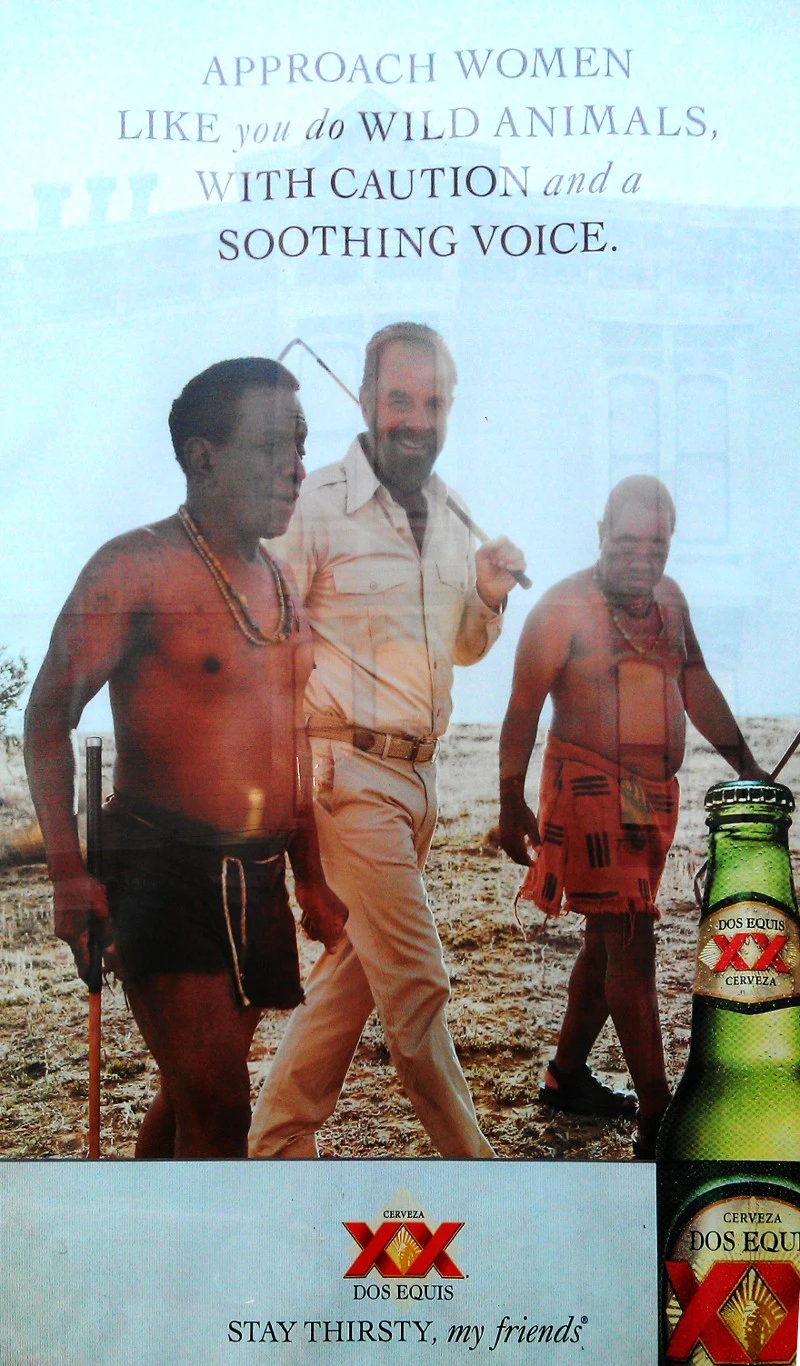If you ever need to unzip data compressed with zlib without a header (e.g. produced by Erlang’s zlib:zip), it pays to be aware that
windowBits can also be -8..-15 for raw inflate. In this case, -windowBits determines the window size. inflate() will then process raw deflate data, not looking for a zlib or gzip header, not generating a check value, and not looking for any check values for comparison at the end of the stream. (zlib.h)
Hence, you can do something like

Smear green blood
Your palms are sweaty
Scaly skin glistening
To last demands
The planet’s going under and
You’re floating overhead
(Lizard men) [x2]
Realizing that the sexism of beer advertising is just too implicit, Dos Equis helpfully spells out exactly how to treat women as subhuman.

I don’t even want to get near the colonialist thing here, either.
You’re so prolific
An impact factor well above thirty two
It makes me jealous
And in need of passing this peer review–
You know my motivations
In search of reputation
My erdos number ill acquire from you
So in this explication
Of conformal transformations
Please excuse me I don’t mean to be crude
But tonight I’m citing you
(11:14:44 AM) Duretti Hirpa: I HAVE ALL THE GAY CARDS IN THIS RELATIONSHIP
(11:14:54 AM) Duretti Hirpa: shit, i had all the boyfriend points in your LAST relationship
23:09 < justin> Erlang tattoo might be cool
23:09 < justin> not many have those
23:10 < justin> not even sure what that would look like
23:10 < aphyr_> Yeah, really gonna add to my aura of mysterious sexiness
23:10 < aphyr_> "What's that?"
23:10 < aphyr_> "Oh, that's Erlang. It's a distributed functional programming language."
23:10 < justin> Mad tail
23:10 < aphyr_> "Tell me, would you and your friends like to do it... concurrently?"
23:13 < aphyr_> "Oh sorry. You're not my... TYPE."
23:13 < aphyr_> DAMN YOOOOUUU STATIC COMPILERS!
Things are getting a little slap-happy here in the final hours before Showyou launch.
“So,” our CEO asked me, “what happens if our new service becomes a huge success?”
aphyr: I think basically we can *expect* the service to collapse in unpredictable ways
mark: that would not be good
aphyr: No this is good!
aphyr: It means we averted all the ways it would predictably collapse!
mark: thanks kyle, i'll sleep well over the weekend now :-)
Today I realized that this project has basically been to build a service on par with Twitter or Yammer. The difference is they employ about 15 or 20 people to do my job! This… should be interesting!
I’m supposed to be working on some distributed feed stuff tonight, but dammit, this song is incredible and I want to think about it.
Imogen Heap is a musical genius. Whatever you think of her particular style, voice, lyrics; one has to admit that anybody who can sit down and invent an eight track song to any suggested melody, in any key, beat, and meter, on the fly, understands music.
I feel obligated to preserve this. The campaign bothered me, but I couldn’t figure out exactly why.

Highway 1, north of San Francisco. I absolutely love the stretch at the crescendo; it makes me melt every time I hit those curves.
Experimenting with vibration stabilization with virtualdub deshaker, but I don’t think the 82% rolling shutter factor is correct for the 1080p mode… so the sky is dancing. Color is a little closer to what I’d like, and I got to have a little fun with that first cut to the tunnel. :)
Sometimes you need to figure out where ruby code came from. For example, ActiveSupport showed up in our API and started breaking date handling and JSON. I could have used git bisect to find the commit that introduced the problem, but there’s a more direct way.
<cr:code lang=“ruby”> set_trace_func proc { |event, file, line, id, binding, classname| if id == :require args = binding.eval(“local_variables”).inject({}) do |vars, name| value = binding.eval name vars[name] = value unless value.nil? vars end
puts "req #{args.inspect}"
if defined? ActiveSupport
puts "AHA"
exit!
end

If I recall correctly, this was the result of a protracted 1v1 CounterStrike match between myself and Jon Beare. Neither of us could move without exposing ourselves, so we fought by proxy.